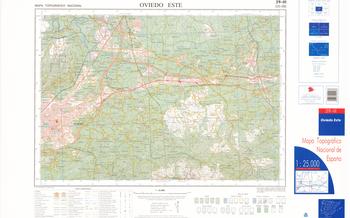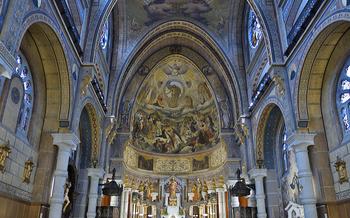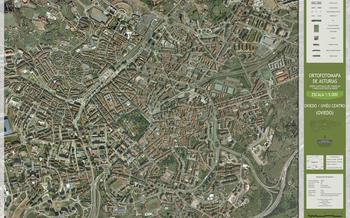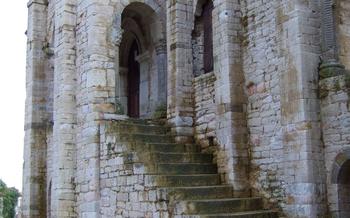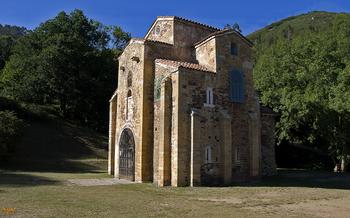
The Path of the Bear
- The Path of the Bear: An Overview
- Embarking on the Journey
- Navigating the Path:
- Natural Wonders of the Path
- Cultural Heritage and Historical Sites
- Must-See Highlights:
- The Charm of Villages Along the Path
- Wildlife Watching Opportunities
- Outdoor Activities and Adventures
- Unique Experiences and Events
- Local Cuisine and Gastronomic Delights
- Sustainable and Responsible Tourism Practices
- Photography Tips for Capturing the Path's Beauty
- Solo Travel Considerations: Embracing the Path Alone
- Insider Tip: Hidden Gem - The Secluded Beach of Xagó
The Path of the Bear: An Overview
The Path of the Bear, known as "Senda del Oso" in Spanish, is a captivating long-distance trail that traverses the stunning natural landscapes of Asturias, a region in northwestern Spain. Its origins date back to the late 19th century, when the mining industry flourished in the area and mule tracks were used to transport coal from the mines to the coast. Today, this historic route has been transformed into a remarkable trail that celebrates the region's scenic beauty, rich wildlife, and cultural heritage.
The Path of the Bear spans approximately 117 kilometers, offering a diverse range of terrain and experiences. It winds its way through lush forests, meanders alongside crystal-clear rivers, and traverses rugged mountains, providing hikers and nature enthusiasts with a journey that is both challenging and rewarding. The trail is divided into several stages, allowing hikers to tailor their itinerary based on their preferences and fitness level.
Beyond its scenic allure, the Path of the Bear holds immense natural significance. It serves as a sanctuary for diverse wildlife, including the endangered Cantabrian brown bear, and is recognized as a UNESCO Biosphere Reserve. The trail's commitment to sustainable tourism practices ensures that the region's natural treasures are preserved for future generations.
Embarking on the Journey
Before embarking on your adventure along the Path of the Bear, it's essential to plan your itinerary carefully. The path is divided into multiple stages, each offering unique landscapes and experiences. Depending on your fitness level and time constraints, you can choose to complete the entire path or tackle specific stages.
To begin your journey, you must select a starting point. Several routes offer different perspectives and challenges. The most popular starting point is in Proaza, which allows you to experience the path's scenic wonders gradually. Alternatively, you can start from Carangas or Teverga, offering more challenging terrain and stunning views.
When packing for your trek, consider the variable weather conditions in the region. Sturdy hiking boots, comfortable clothing, and rain gear are essential. A map, compass, or GPS device is crucial for navigation, as signage along the path can be limited. Remember to bring sufficient food and water, as supplies may be scarce in some areas.
Permits and regulations are in place to ensure the path's sustainability. Obtain the necessary permits from the local authorities before starting your trek. Adhere to the regulations, including staying on designated trails, respecting wildlife, and minimizing your environmental impact.
Navigating the Path:
The Path of the Bear offers a well-marked and maintained trail system, ensuring a safe and enjoyable journey. Equip yourself with detailed maps, guidebooks, or download GPS tracks to navigate the route efficiently. Be prepared for varying trail conditions, including steep sections, uneven terrain, and occasional muddy or rocky paths. Sturdy hiking boots and trekking poles are recommended for added support and stability.
Respect nature and wildlife by staying on designated trails to minimize your impact on the environment. Follow all safety regulations and signage, and be mindful of potential hazards such as slippery rocks, loose gravel, and unpredictable weather conditions. Pack essential supplies like water, snacks, and a first-aid kit for emergencies.
Accommodation options range from charming village guesthouses and hostels to traditional mountain refuges along the path. Plan your lodging in advance, especially during peak season, to secure your preferred accommodations. Embrace the opportunity to interact with locals, learn about the region's history and traditions, and support the local economy.
Natural Wonders of the Path
The Path of the Bear showcases a breathtaking array of natural wonders, captivating visitors with its diverse flora and fauna, unique geological formations, and refreshing water bodies. As you traverse the path, be prepared to encounter a vibrant tapestry of life, where verdant forests teem with wildlife, towering mountains reveal awe-inspiring rock formations, and sparkling rivers and lakes offer tranquil respites.
-
Flora and Fauna: The path is home to a diverse array of plant and animal species, providing a haven for wildlife enthusiasts. Keep your eyes peeled for the elusive brown bear, a symbol of the region, as well as other magnificent creatures such as wolves, deer, and wild boar. The skies above are adorned with a variety of bird species, including eagles, vultures, and kites, while the rivers and lakes teem with trout, salmon, and other aquatic life.
-
Geological Formations: The path traverses a landscape sculpted by geological forces over millions of years, revealing a fascinating array of rock formations. Admire the towering limestone cliffs, marvel at the deep gorges carved by rivers, and explore the mysterious caves and grottoes that dot the path. These geological wonders offer a glimpse into the region's rich geological history and provide stunning backdrops for your journey.
-
Rivers, Lakes, and Waterfalls: The path is blessed with an abundance of water bodies, offering refreshing stops and tranquil moments amidst the natural beauty. Cross crystal-clear rivers over ancient stone bridges, pause to admire the cascading waterfalls, and take a dip in the pristine lakes that dot the landscape. These water bodies provide opportunities for swimming, fishing, and simply relaxing in the embrace of nature's serenity.
-
Caves and Grottoes: The path is home to a network of caves and grottoes, inviting you to explore the hidden depths of the region. Discover subterranean chambers adorned with stalactites and stalagmites, follow underground rivers, and uncover the secrets of these natural wonders. These caves and grottoes offer a unique perspective on the region's geology and provide a thrilling adventure for those seeking to venture off the beaten path.
Cultural Heritage and Historical Sites
The Path of the Bear is not just a natural wonderland; it's also a journey through history and culture. The region has a rich industrial heritage, with remnants of old mining operations, particularly related to coal. These sites offer a glimpse into the area's past, where locals once worked hard to extract coal from the depths of the mountains.
Along the way, you'll encounter villages that have preserved their traditions and festivals, showcasing the vibrant culture of the region. These celebrations often involve traditional music, dance, and local cuisine, giving you a chance to immerse yourself in the Asturian way of life.
Moreover, the path is dotted with historical landmarks and monuments that speak to the region's storied past. These include ancient churches, medieval towers, and Romanesque bridges, each with its own tale to tell. Discovering these hidden gems adds a layer of historical intrigue to your journey.
Finally, no exploration of the region's culture is complete without savoring its gastronomy. Asturian cuisine is renowned for its hearty dishes, fresh seafood, and delectable cheeses. Indulge in local specialties like fabada (a hearty bean stew) or cachopo (a breaded cutlet filled with cheese and ham), accompanied by a glass of local cider or wine. The Path of the Bear is a culinary adventure that will tantalize your taste buds and leave you craving more.
Must-See Highlights:
Among the numerous attractions along the Path of the Bear, several stand out as must-see highlights that offer unique experiences and breathtaking views.
-
The Viewpoint of Foces: Situated at the edge of a deep gorge, this viewpoint provides panoramic vistas of the surrounding mountains and valleys. The stunning scenery, with its verdant forests and rugged cliffs, is a feast for the eyes.
-
The Cave of the Sidrón: This archaeological site holds immense significance, as it contains some of the oldest human remains discovered in Spain. Visitors can explore the cave, marvel at the intricate rock formations, and learn about the fascinating history of human habitation in the region.
-
The Gorge of Esva: This natural wonder, carved by the Esva River over millions of years, offers a breathtaking spectacle of sheer cliffs, cascading waterfalls, and lush vegetation. The gorge's dramatic beauty attracts hikers, nature enthusiasts, and photographers alike.
-
The Tower of La Atalaya: This medieval watchtower, perched atop a hill, offers panoramic views of the surrounding countryside. Constructed in the 14th century, the tower served as a strategic defensive structure and is a testament to the region's rich history.
The Charm of Villages Along the Path
The Path of the Bear winds its way through several charming villages, each with its own unique character and history.
Proaza is a picturesque village nestled among lush green valleys. Its cobblestone streets, traditional Asturian houses, and 16th-century church create a timeless atmosphere.
Carangas is a village steeped in history, with roots dating back to the Middle Ages. Its narrow streets and stone houses evoke a bygone era, while the 12th-century Romanesque church of Santa María de Carangas stands as a testament to the village's rich past.
Teverga is a nature lover's paradise, surrounded by breathtaking landscapes and abundant wildlife. The village itself is a haven of tranquility, with traditional Asturian houses and a 17th-century palace adding to its charm.
Quirós is a village renowned for its local crafts and traditions. Visitors can explore workshops where artisans create intricate wood carvings, pottery, and textiles. The village also hosts an annual craft fair, showcasing the best of the region's traditional arts.
Wildlife Watching Opportunities
The Path of the Bear is a haven for wildlife enthusiasts, offering the chance to spot a diverse range of species in their natural habitat. The most iconic animal along the path is undoubtedly the brown bear, a majestic creature that roams the forests and mountains of the region. While bear sightings are relatively rare, the thrill of encountering one in the wild makes it a truly unforgettable experience.
Birdwatching enthusiasts will delight in the abundance of avian life that calls the path home. From soaring eagles and vultures to colorful woodpeckers and warblers, the skies are alive with a symphony of bird songs. Keep an eye out for the elusive golden eagle, a majestic predator that frequents the high mountain peaks.
Beyond bears and birds, the path offers opportunities to observe a variety of other wildlife. Agile chamois can be spotted leaping among the rocks, while shy roe deer graze in the meadows. Listen for the calls of the elusive Iberian wolf, a critically endangered species that still finds refuge in these remote mountains. With a keen eye and a little patience, you may even catch a glimpse of the secretive otter playing in the crystal-clear rivers that crisscross the path.
Outdoor Activities and Adventures
The Path of the Bear offers a multitude of outdoor activities and adventures for nature enthusiasts and adrenaline seekers alike. Whether you prefer exploring the wilderness on foot, testing your limits on a mountain bike, or enjoying the serenity of fishing, the path has something to offer everyone.
-
Hiking and Trekking:
The path's diverse terrain presents a range of hiking and trekking trails for all levels of experience. From gentle strolls along riverbanks to challenging ascents through mountain passes, there's a trail to suit every preference. Immerse yourself in the tranquility of the forest, marvel at stunning viewpoints, and discover hidden waterfalls as you traverse the path on foot.
-
Mountain Biking:
For those seeking a more exhilarating experience, the path offers a network of thrilling mountain biking trails. Navigate through winding forest paths, conquer steep inclines, and enjoy exhilarating descents as you explore the stunning landscapes from a unique perspective. The path's varied terrain provides both technical challenges and scenic rewards for mountain bikers of all skill levels.
-
Fishing:
The path is home to several pristine rivers and lakes, offering serene spots for fishing enthusiasts. Cast your line and try your luck at catching trout, salmon, and other freshwater species. Whether you prefer fly-fishing in tranquil streams or trolling in deeper waters, the path provides ample opportunities to enjoy the tranquility of nature while indulging in your passion for fishing.
-
Kayaking and Canoeing:
For a unique perspective of the path's waterways, embark on a kayaking or canoeing adventure. Paddle through tranquil rivers, navigate gentle rapids, and explore hidden coves along the coast. Discover the path's hidden beauty from a different vantage point as you glide along the water, surrounded by stunning scenery.
Unique Experiences and Events
The Path of the Bear offers a range of unique experiences and events that enhance its allure. One of the highlights is the Bear Festival, held annually to celebrate the path's iconic symbol. The festival features parades, traditional music and dance performances, craft fairs, and other festivities that showcase the region's rich cultural heritage.
For those seeking a physical challenge, the path hosts several mountain races and challenges that test endurance and determination. These races traverse diverse terrains, offering participants breathtaking views and a chance to conquer their limits.
Additionally, gastronomic workshops are organized along the path, providing visitors with an opportunity to learn about and savor the local cuisine. These workshops often feature hands-on cooking classes, tastings, and demonstrations, allowing participants to immerse themselves in the region's culinary traditions.
Throughout the year, the path also hosts various cultural events and fairs that celebrate the local way of life. These events showcase traditional crafts, music, dance, and gastronomy, offering visitors a glimpse into the vibrant culture of the region.
Local Cuisine and Gastronomic Delights
Asturian cuisine, a culinary delight in its own right, takes center stage along the Path of the Bear. Traditional dishes, such as "fabada", a hearty bean stew, and "cachopo", a breaded and fried steak, showcase the region's love for hearty and flavorful meals. Regional specialties, like "sidra", a sparkling apple cider, and "quesos de los Picos de Europa", a variety of cheeses from the nearby mountain range, offer unique tastes that reflect the region's rich gastronomy.
Don't miss the chance to sample the local cheeses and products, such as honey, jams, and cured meats, which showcase the region's dedication to artisanal production and sustainable farming. Recommended restaurants along the path, such as "Casa Belarmino" in Proaza and "El Regueru" in Carangas, offer authentic Asturian experiences, where you can savor the flavors of the region in a welcoming and traditional setting.
Sustainable and Responsible Tourism Practices
As you embark on your journey along the Path of the Bear, it is essential to embrace sustainable and responsible tourism practices. This involves minimizing your environmental impact, supporting local communities, and respecting local customs and traditions.
Minimizing Environmental Impact: - Pack out what you pack in: Leave no trace of your presence and avoid littering. - Respect wildlife and their habitats: Observe animals from a distance and avoid disturbing them. - Conserve water and energy: Be mindful of your water and electricity consumption. - Choose eco-friendly accommodation and transportation options: Opt for sustainable hotels and use public transport or walk whenever possible.
Supporting Local Communities: - Shop locally for souvenirs and supplies: Support local businesses and artisans. - Dine at local restaurants: Experience the local cuisine and support the community. - Hire local guides and tour operators: Learn from their expertise and contribute to their livelihoods.
Respecting Local Customs and Traditions: - Dress appropriately: Respect local dress codes and customs. - Be mindful of noise levels: Keep your voice down and avoid disturbing the peace. - Learn a few Spanish phrases: Show your respect by communicating in the local language. - Be open to cultural differences: Embrace the local culture and traditions with an open mind.
By following these principles, you can contribute to the preservation of the Path of the Bear and ensure that future generations can enjoy its beauty and wonders.
Photography Tips for Capturing the Path's Beauty
Essential Camera Gear:
Embarking on a photographic journey through the Path of the Bear requires adequate gear. A DSLR or mirrorless camera, with a wide range of lenses, is recommended for capturing the diverse landscapes and wildlife. A tripod ensures stability for crisp shots, especially during low-light conditions. Additional filters and accessories, such as polarizers and ND filters, enhance the quality of your images.
Techniques for Landscape Photography:
Mastering the art of landscape photography is crucial to capturing the essence of the Path of the Bear. Composition plays a vital role, with elements like leading lines, rule of thirds, and depth of field adding visual interest. Lighting conditions are paramount, with golden hours offering the most dramatic light. Experiment with different shutter speeds to create dynamic effects, such as blurring waterfalls or conveying a sense of movement.
Wildlife Photography:
Patience and skill are essential for wildlife photography along the Path of the Bear. Respecting the animals' natural habitat and maintaining a safe distance are crucial. Telephoto lenses are necessary for capturing close-ups of elusive creatures. Silent camera modes and camouflage clothing increase your chances of capturing candid moments without disturbing the wildlife.
Composition and Lighting:
Creating impactful shots involves careful consideration of composition and lighting. Experiment with different angles and perspectives, getting low to capture unique vantage points. Natural light is often the best, but diffusers or reflectors can help soften harsh shadows. Understanding the principles of depth of field allows you to isolate your subject and create a sense of depth.
Solo Travel Considerations: Embracing the Path Alone
While the Path of the Bear is generally safe for solo travelers, it's essential to exercise caution and take necessary precautions. Inform someone about your itinerary, carry a whistle or personal alarm for emergencies, and consider bringing a satellite phone for communication in remote areas.
Solo travel offers unique benefits. You'll have the freedom to set your own pace, choose your stops, and immerse yourself in the tranquility of the surroundings without distractions. Embrace the opportunity for self-discovery and personal growth as you navigate the path and encounter fellow travelers along the way.
Connecting with other hikers is a rewarding aspect of solo travel. Share stories, exchange tips, and form lasting friendships with like-minded individuals who appreciate the beauty of the Path of the Bear. Whether you prefer solitude or camaraderie, this journey offers a fulfilling experience for solo travelers seeking adventure and introspection.
Insider Tip: Hidden Gem - The Secluded Beach of Xagó
As you traverse The Path of the Bear, make sure to explore the secluded beach of Xagó. This hidden gem is a pristine stretch of golden sand and crystal-clear waters, nestled between towering cliffs and lush vegetation. The beach is only accessible by foot or boat, ensuring a tranquil and secluded experience. Take a refreshing dip in the ocean, soak up the sun on the soft sands, or explore the surrounding rock formations and caves. Xagó Beach offers a serene escape from the busier sections of the path, allowing you to fully immerse yourself in the tranquility and beauty of the Asturian coast.

